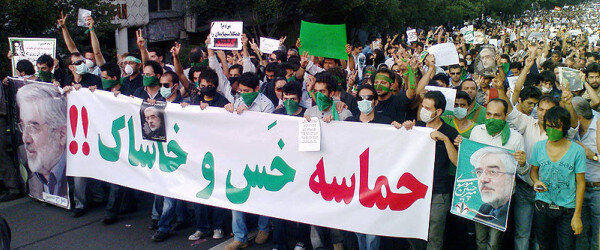Iran’s Counter-revolutionary Influence
Today’s unrest is not an echo of the Islamic Revolution. The Arab masses are not calling for Islamic government and religious leaders have largely avoided the spotlight. Interestingly, “moderate” Arab regimes—besieged by their publics and seeking relief—may indeed draw inspiration from Tehran in the coming months. Less than two years ago, hundreds of thousands protestested fraudulent elections and shook the country to its core. And yet, the regime endured.How it endured—even if it simply bought time with decisive brutality—matters greatly now. Other monarchs and dictators are suffering from similar movements in terms of both scope and fervor. Naturally, the success of Iran’s 2009 counter-revolutionary campaign will inform the actions of its neighbors. So too will the mistakes made by Arab autocrats. The lesson is clear: Arrogance, concessions, and belated admissions of error, as proven by former Presidents Ben Ali and Mubarak, lead to failure—but President Ahmedinejad remains in power.The 2009 protests prompted a two-fold response from Ahmadinejad, Ayatollah Khamenei and supportive hardliners. During the crisis, the regime maintained an official tone of uniform hostility. At no point was reconciliation offered—at best, Ayatollah Khamenei ordered an “investigation” into voting irregularities but no recount or mea culpa. Violence bolstered the regime’s tone and was directed at protesters without delay. Loyalist forces imprisoned and tortured many; opposition leaders were arrested; authorities tried to prevent news from escaping the capital; and the internet was strangled. The immediate government response was very different from that of Tunisia and Egypt. Not only did Iran’s leadership recognize unrest to be an existential threat, it responded forcefully and unapologetically.Since then, the regime has pursued policies intended to cripple opponents over the long-term. Critical newspapers have been shut down and those permitted to print have seen publishers literally dragged from newsrooms. Surviving newspapers—especially those run by the state—avoid referencing the fate of opposition leaders. Reformist parties like the Islamic Iran Participation Front and the National Trust Party were banned just last year to prevent grievances from gaining traction with political parties recognized by the state. Universities remain a favorite target as well. And beyond simple intimidation tactics, the regime has promised greater rewards to loyalists since the crisis erupted. According to The Economist, “People who attend mourning ceremonies in government offices are rewarded with free food. Baseejis [loyalist militia members] get into university more easily than non-baseejis. Civil servants in some departments are given loans on generous terms.”In some respects, Iran’s response will be harder for Arab strongmen to emulate. The Iranian Revolutionary Guard Corps and the baseej remain a critical asset because of their loyalty to the cause and conservative ideological bent. The religious-political overlap enjoyed by the Ayatollah is also unique, as the establishment was able to claim enemies of the state were also enemies of Islam and that the 2009 election results were a “divine assessment.” It will also be impossible for pro-American regimes to convince anyone that foreign plotters are creating unrest after years of cozy relations with Washington.Iran’s advantages, though, do not make their example impossible to mimic. The King of Jordan, for instance, maintains a security force directly attached to the throne. Bahrain’s apparatus represents unpopular royal interests and has already proven willing to kill. Libyan forces have rallied to Qaddafi’s call in the past day, killing some two dozen protesters according to Human Rights Watch. And government forces in Yemen, beset by threats ranging from insurgencies to al Qaeda, have refocused their might on demonstrators recently.The bloodless phase of today’s Arab revolts is all but over. Monarchs and dictators are now equipped with two very different examples. One example, offered by Iran, suggests violence and urgency can handicap a revolution even when hundreds of thousands take to the streets. The other example, relentlessly broadcast by al Jazeera these past several weeks, proves concession can be suicidal.But what of today’s demonstrations in Iran—is the regime truly secure? Today’s struggle matters little to those in power. With violence and urgency, the Islamic Republic bought two years of tense stability. Remember that Mubarak’s regime unraveled in only 18 days. Two years might as well be one hundred for those leaders facing expulsion or worse. Note: Since this article began the editing process last Friday, Bahraini forces fired on protestors with live ammunition and Libyan units loyal to Qaddafi killed hundreds. This image is being used under Creative Commons licensing. The original source can be found here.
